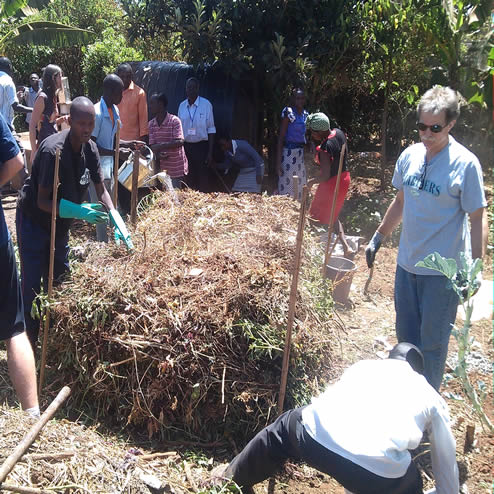It’s All in the Compost Excerpt from "3 Way to Improve Soil for Spring" SFGate, Feb 15, 2013 http://www.sfgate.com/homeandgarden/chroniclegarden/article/3-ways-to-improve-soil-for-spring-4280748.php
Photo by Boaz Oduor Compost fosters healthy plants and returns organic matter to the soil. SFGate asked John Jeavons, compost connoisseur, to share his favorite technique for feeding soil. If you choose this method, your garden will thank you. Compost Finding the right balance of (immature crop) greens and (mature crop) browns takes practice, but ultimately your pile should have a carbon-to-nitrogen ratio of 30:1, consisting of 45 percent greens, including kitchen waste, 45 percent browns and 10 percent soil, according to expert composter John Jeavons, director of the GROW BIOINTENSIVE program, a high-yield gardening method for plots 3 square feet and up, in Willits, CA. Jeavons builds his pile on a new raised bed each year, so compost juices rotate throughout the garden. Besides adding microbes and nutrients, the right amount of compost can boost soil's ability to retain water. He says compost "is an amazing thing. It smells like fresh spring once it's fully composted." The method Loosen the area 12 inches deep and cover with 2 to 4 inches of roughage such as twigs and small branches. Layer two 5-gallon buckets of mature, dry matter, such as straw or dried leaves. Thoroughly water the pile. Top with two 5-gallon buckets of green material like grass clippings, kitchen waste and green leaves. Water the greens so they don't dry out. Add 2 1/2 gallons of soil to hold in moisture and hasten decomposition. Water the pile and repeat the steps above until your pile reaches a height of 3 feet and cap it with one 5-gallon bucket of soil. Return the stake to the pile and repeat daily for two weeks until the temperature drops from hot to the touch to significantly warm or 111 to 119 degrees Fahrenheit.
top | Newsletter Home | Article Index | Archive
|



